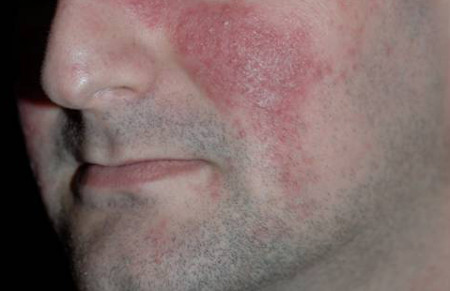Criteria
Clinical features[1]
Diagnostic phenotype:
Fixed centrofacial erythema
Phymatous changes.
Major phenotypes:
Without a diagnostic phenotype, the presence of 2 or more major features may be considered diagnostic.
Major phenotypes include:
Papules and pustules
Flushing
Telangiectasia
Ocular manifestations.[Figure caption and citation for the preceding image starts]: Rosacea with erythema, papules, and pustulesCourtesy of Dr Richard Allen Johnson (MD, CM. Harvard Medical School); used with permission [Citation ends].

Secondary signs and symptoms
Secondary signs and symptoms may appear with 1 or more diagnostic or major phenotypes and may include the following.
Burning or stinging. May occur typically on erythematous skin without scales, although scaling may also occur, especially on malar skin.
Oedema. Facial oedema may accompany or follow prolonged erythema or flushing.
Dry appearance. Central facial skin may be rough and scaly so as to resemble dry skin and suggest an eczematous dermatitis, and rosacea may often include the co-existence of seborrhoeic dermatitis.
Use of this content is subject to our disclaimer